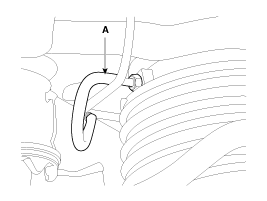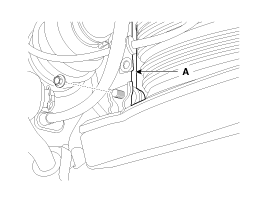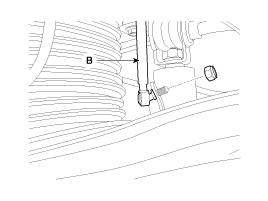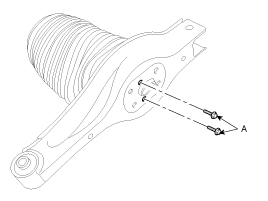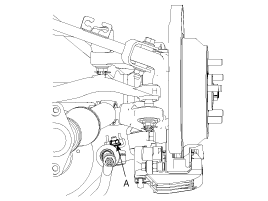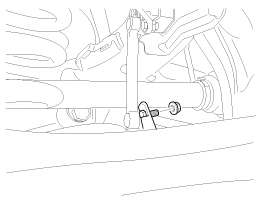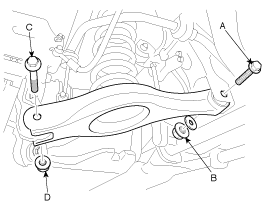 Hyundai Equus: Air Spring Repair procedures
Second generation VI (2009–2025) / Hyundai Equus VI 2009-2025 Service Manual / Suspension System / Air Suspension System / Air Spring Repair procedures
Hyundai Equus: Air Spring Repair procedures
Second generation VI (2009–2025) / Hyundai Equus VI 2009-2025 Service Manual / Suspension System / Air Suspension System / Air Spring Repair procedures
| Removal |
|
| 1. |
Remove the rear wheel & tire.
|
| 2. |
Remove the air tube (A).
|
| 3. |
Remove the stabilizer link (A) & height sensor (B).
|
| 4. |
Loosen the cam bolt (A).
|
| 5. |
Installation is the reverse of removal.
|
| 1. |
Remove the rear wheel & tire.
|
| 2. |
Loosen the nut(A) and then remove the stabilizer link.
|
| 3. |
Loosen the nut and then remove the height sensor(A).
|
| 4. |
Loosen the bolt (A), nuts (B), flange bolt (C), lock nuts (D) and then remove the lower arm.
|
| 5. |
Installation is the reverse of removal. |
| 6. |
Check the alignment.
(Refer to Tires/Wheels - "Alingment") |
 Air Spring Description and Operation
Air Spring Description and Operation
Description
Because of the design layout, the air spring and the shock
absorber (damper) is separated. The average (target) pressure of rear
air spring for normal operation is around 8.5 bar.
...
 Compressor Components and Components Location
Compressor Components and Components Location
Components
1. Dyer2. Motor3. Connected to tube4. Reverse valve connector5. Connector for motor driveing
...
See also:
Automatic-dimming function
Your mirror will automatically dim upon detecting glare from the vehicles traveling
behind you. The autodimming function can be controlled by the Dimming ON/OFF Button:
1. Pressing the button turn ...
Components and Components Location
Components
1. Front seat headrest2. Front seat headrest guide3. Front seat back cover4. Front seat cushion cover5. Front seat cushion pad6. Front seat back cushion frame7. Front seat mounting cov ...
ETC (Electronic Throttle Control) System Description and Operation
Description
The Electronic Throttle Control (ETC) System consists of a
throttle body with an integrated control motor and throttle position
sensor (TPS). Instead of the traditional throttle cab ...


